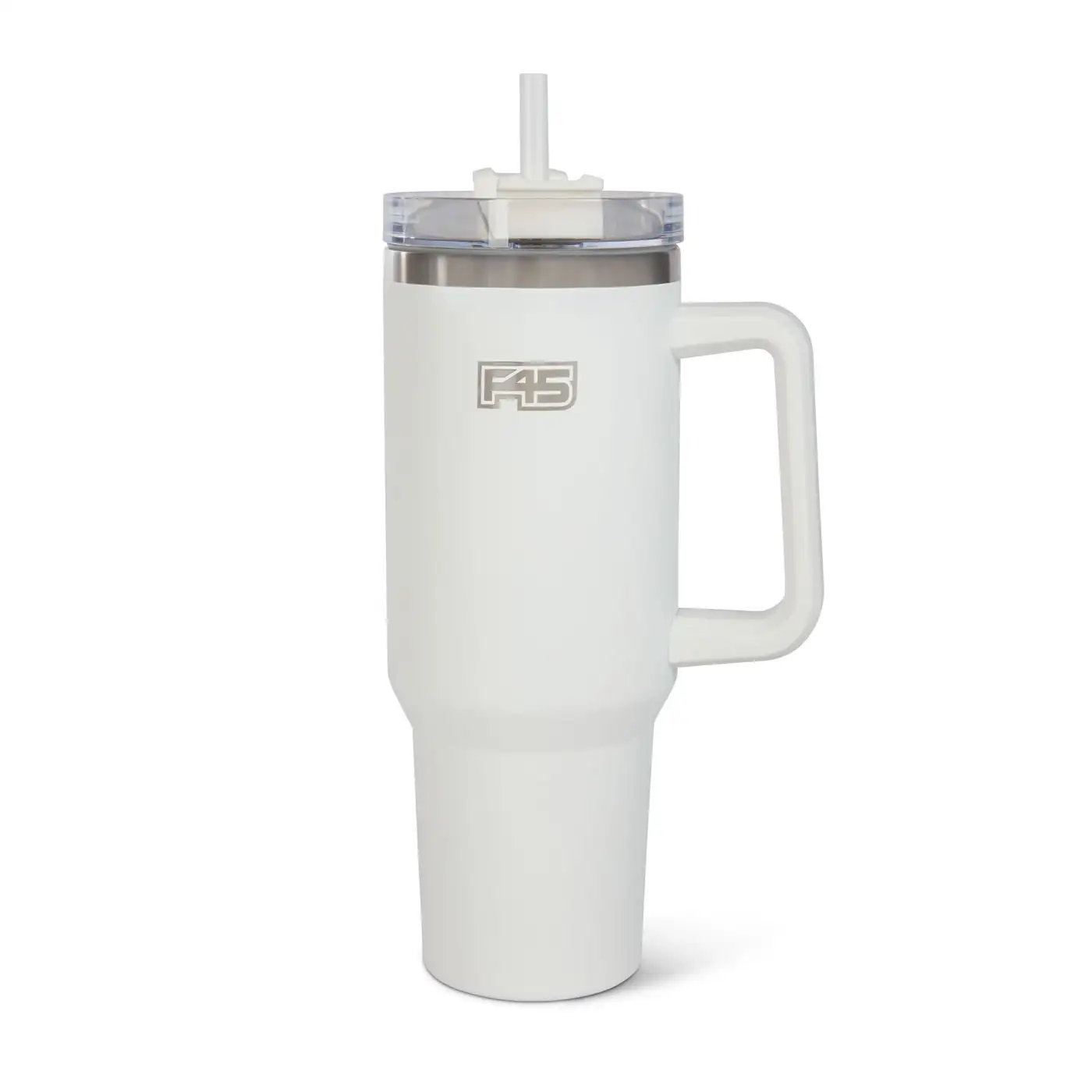Getting back into a training routine can seem overwhelming at first, especially while trying to plan and prep meals for the week. However, dedicating a short amount of time each week to do a quality grocery shop is key for maximizing a healthy eating routine. Although it may seem like a drag to make a trip to the grocery store, knowing exactly what to look for and the basics of interpreting a nutrition label will help save both time and money while shopping.
F45 Nutritionist Kim Bowman notes that a grocery shop shouldn’t take more than 30 to 45 minutes, as long as you have an idea of what meals you’d like to prep for the week. Additionally, understanding a nutrition label/panel is a major time saver at the grocery store, particularly with packaged foods. Food manufacturers often use marketing tactics to make a product appear healthy on the outside, even if it contains hidden ingredients like added sugar and trans fats.
When it comes to making decisions about food items, being able to quickly read a food panel/label ensures you’ll know exactly what ingredients are in various food items (and what to watch out for)! Check out these tips below for stress-free, time-efficient grocery shopping.
Have an idea of what meals you’re prepping for the week
Luckily, the Challenge Cook-at-Home Meal Plans include a weekly grocery list catered to meals for each week. The list is broken into produce, proteins, condiments, veggies, fruit, dairy/dairy-alternatives, and dry good categories, so you’ll know exactly what aisle to go to while shopping. Just be sure to make modifications to the shopping list according to your dietary preferences!
Make a weekly grocery list to replenish perishable items
Before heading to the store, it’s always a good idea to do an overhaul of your perishable food items and make a short list of items that you’ll need to prep meals for the following week. The dry goods and condiments noted in the Cook-At-Home shopping list don’t need to be stocked as often as perishable food items. A time-efficient weekly grocery shop means you’ll not only avoid having to do a complete grocery store restock when you realize you have absolutely no food at home, but will ensure you don’t double up on items that you already have on hand.
Avoid grocery shopping on an empty stomach
Let’s face it, all of the baked goods and sweet treats at the grocery store can often distract us from what we actually need to purchase. When we shop on an empty stomach, our hunger can get the best of us, making it difficult to concentrate and causing us to buy unnecessary, often unhealthy items (think candy and chips) that can really rack up our grocery bill!
Having a healthy snack with protein and fiber prior to shopping will curb hunger and cut sugar cravings so we stay focused on purchasing quality food. Another tip: the majority of processed and packaged foods are typically found in the middle aisles, while the fresh produce and proteins are found on outer areas of the store (our go-to aisles).
Avoid shopping at peak hours
Sunday afternoons are typically the busiest time to hit the grocery store. To avoid long lines and over-picked produce, it’s best to plan your shop during off-hours, whether that’s early morning, evenings, or during the week. Once you find a time that works well with your schedule, aim to stay consistent and dedicate this time to your weekly routine. Not only will this maximize time-efficient shopping, but you’ll get into a habit of making a quick shop a priority, which means you won’t have to endure those long Sunday afternoon lines.
Avoid added sugar
Food labels provide key nutrient information and can be a great tool with which to compare the quality of food items. However, these labels can be misleading, especially when it comes to differentiating total versus added sugar. While total sugars are those naturally present in foods such as fruit (fructose), added sugars are those that have been removed from their original source, heavily processed, and added to foods or beverages to boost flavor (unnaturally).
Excess consumption of added sugar has been linked to a number of chronic health conditions, including obesity, diabetes and heart disease (3). The difficulty with nutrition labels is that the ‘total sugars’ section combines naturally occurring sugars and added sugars, making it tough to differentiate how much added sugar is actually in an item.
Additionally, while we often think of added sugar in baked goods and candy, it can also be hidden in savory foods such as sauces, dressings, and bread. Therefore, when assessing nutrition labels, the key is to check the ingredient list. There are a variety of different names for added sugar, with the most common noted below:
- Sucrose
- Dextrose
- Cane Juice, Cane Syrup, Evaporated Cane Juice
- High Fructose Corn Syrup, Corn Sweeteners
- Malt Sugar or Malt Syrup
- Fruit Juice Concentrates
- Agave Nectar
- Molasses
Good news, though—as of January 1, 2021, the Food and Drug Administration (FDA) has mandated a new food label that makes it easy to differentiate between sugars. New labels will separate total and added sugars by providing the grams of added sugar per serving along with the percent Daily Value (%DV) for added sugars, which previously was not required. As a general guideline (according to the World Health Organization (WHO)), daily added sugar consumption should not exceed more than 10% of your individual total daily calorie requirements.














